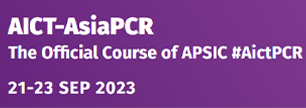


 Article Link
Article Link

SPECT and PET in ischemic heart failure
Angelidis G, Giamouzis G, Karagiannis G et al.
KEYWORDS
18-fluoro-deoxyglucose; Heart failure; Ischemic; PET; Positron emission tomography; Rubidium-82; SPECT; Single photon emission computed tomography; Technetium-99 m; Thallium-201; Viability
Heart failure is a common clinical syndrome associated with significant morbidity and mortality worldwide. Ischemic heart disease is the leading cause of heart failure, at least in the industrialized countries. Proper diagnosis of the syndrome and management of patients with heart failure require anatomical and functional information obtained through various imaging modalities. Nuclear cardiology techniques play a main role in the evaluation of heart failure. Myocardial single photon emission computed tomography (SPECT) with thallium-201 or technetium-99 m labelled tracers offer valuable data regarding ventricular function, myocardial perfusion, viability, and intraventricular synchronism. Moreover, positron emission tomography (PET) permits accurate evaluation of myocardial perfusion, metabolism, and viability, providing high-quality images and the ability of quantitative analysis. As these imaging techniques assess different parameters of cardiac structure and function, variations of sensitivity and specificity have been reported among them. In addition, the role of SPECT and PET guided therapy remains controversial. In this comprehensive review, we address these controversies and report the advances in patient's investigation with SPECT and PET in ischemic heart failure. Furthermore, we present the innovations in technology that are expected to strengthen the role of nuclear cardiology modalities in the investigation of heart failure.





















